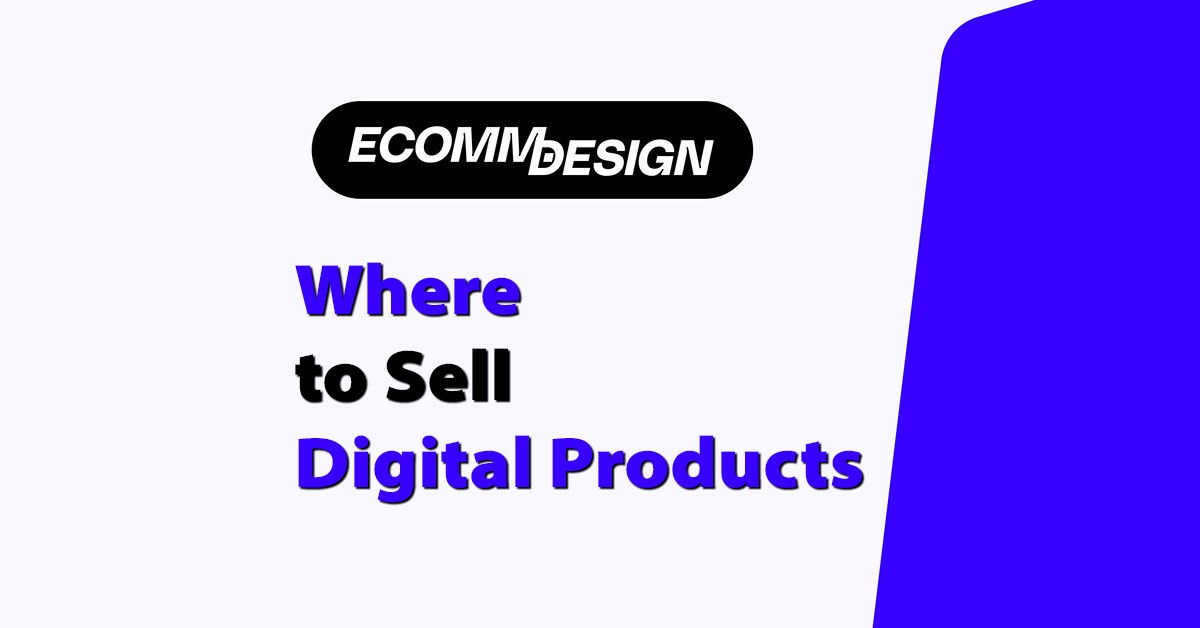
Selling digital products changed my business. No stock. No shipping. No support headaches.
Just great margins, global reach, and total scalability. But it only works if you’re using the right platform.
Over the last 10+ years building ecommerce stores, testing tools, and coaching clients, I’ve used or audited almost every digital product platform out there. Some were amazing.
Others were overpriced, clunky, or a complete waste of time.
If you’re wondering where to sell digital products, I’ll walk you through what’s actually worth using — based on your product, your skill level, and what kind of business you want to run.
Why Sell Digital Products?
Let’s get this out the way — digital products aren’t “easy money.” They take real effort to create, brand, and market. But when done right, they scale in a way physical products simply can’t.
Here’s why I recommend digital products to almost every ecommerce client I work with:
✔ Low Overheads
There’s no stock to hold, no warehouse costs, and no delivery fees. Once it’s created, it’s done. You can sell the same file 100 times or 100,000.
✔ High Profit Margins
Because there’s no cost of goods sold, your margins are often 80–95%. That means more cash in the business and less stress on volume.
✔ Passive Income Potential
Automate your funnel and you can wake up to sales. It’s not instant, but with the right platform and traffic strategy, it builds over time.
✔ Global Reach
Your audience isn’t limited by borders. Sell worldwide without changing your ops. Just make sure your platform handles taxes like EU VAT.
Common digital products to sell:
- Templates (Notion, Canva, Figma, etc.)
- Online courses and mini-workshops
- Ebooks and guides
- Memberships and paid communities
- Stock photos, music, icons, or illustrations
- Software, code, or plugins
- Printables, planners, worksheets
What to Look for in a Platform
Choosing a platform isn’t about features. It’s about fit.
Here’s what I advise clients to look at when picking where to sell digital goods:
1. Pricing and Fees
You’ve got two types of cost models:
- Transaction-based: Free to start, but they take a % of every sale (e.g. Gumroad, Payhip).
- Subscription-based: Flat monthly fee with no (or lower) per-sale cut (e.g. Podia, Kajabi, Shopify).
2. Customisation and Branding
Do you want full control over how your store looks and feels? Or are you happy with a plug-and-play product page?
3. Ease of Use
Some platforms let you launch in 15 minutes. Others need dev support or multiple plugins. Choose based on your technical confidence.
4. Marketing Tools
Look for built-in email tools, affiliate programs, coupon support, SEO features, and upsell capabilities.
5. Payment Handling + Compliance
Can it take payments globally? Does it handle EU VAT, digital delivery, and refunds easily?
TL;DR – Best Platforms to Sell Digital Products (Quick Comparison)
If you’re wondering where to sell digital products, here’s the short version:
✅ Choose the platform based on what you’re selling, how much control you want, and your budget.
| Platform | Start Cost | Fees | Best For | Custom Branding | Built-in Marketing |
|---|---|---|---|---|---|
| Shopify | $29/mo | 0% (via app) | Full ecommerce store | ✔ Yes | ✔ via apps |
| Teachable | Free/$39 | Transaction fees | Online courses | ✔ Good | ✔ Course-focused |
| Gumroad | Free | 10% per sale | Creators and indie sellers | ❌ Limited | ✔ Basic |
| Sellfy | $29/mo | 0% | Printables + digital + POD | ✔ Yes | ✔ Built-in |
| Podia | $39/mo | 0% | Courses, memberships, downloads | ✔ Yes | ✔ Strong |
| Payhip | Free | 5% per sale | Beginner-friendly | ✔ Basic | ✔ Simple |
| Etsy | $0.20/item | 6.5% | Templates, design assets | ❌ Limited | ✔ Marketplace reach |
| Kajabi | $149/mo | 0% | Full-scale info business | ✔ Full control | ✔ Advanced |
| ThriveCart | One-time | 0% | Funnel-based selling + courses | ✔ Yes | ✔ Strong |
| WooCommerce | Free | Add-ons vary | WordPress users | ✔ Full control | ✔ If configured |
| SendOwl | $9/mo | 0% | Simple delivery & subscriptions | ✔ Basic | ✔ Add-ons |
| Notion Marketplaces | Free | Commission | Selling Notion templates | ❌ Limited | ✔ Niche marketplaces |
| Lemon Squeezy | Free | 5% | SaaS, licenses, dev products | ✔ Clean UI | ✔ Built-in |
| Creative Market | Free | Commission | Digital assets for designers | ❌ No control | ✔ Huge traffic |
| PayLoadz | $14.95/mo | 0% | Ebooks, music, media | ✔ Old school | ✔ Basic tools |
The 15 Best Platforms to Sell Digital Products
1. Shopify
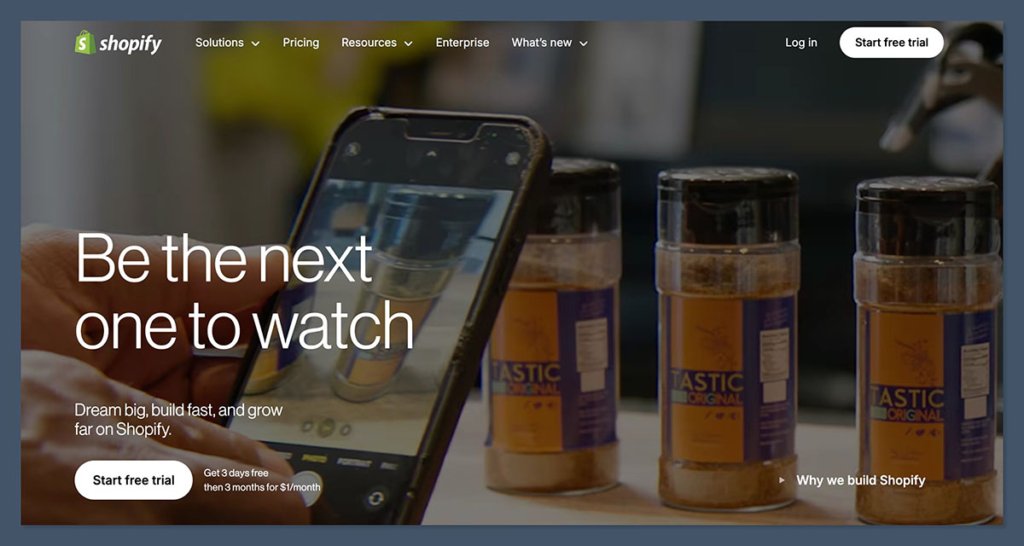
If you’re serious about building a full brand, Shopify is my go-to recommendation.
While it’s well-known for physical products, it’s just as powerful for selling digital goods — especially when paired with apps like Digital Downloads, SendOwl, or Sky Pilot.
You get full control over your store’s design, a clean and trusted checkout experience, and access to an entire ecosystem of apps for upsells, subscriptions, and email marketing.
Whether you’re selling an ebook, a template pack, or a digital membership, Shopify gives you the infrastructure to grow.
And right now, you can start with a 3-day free trial, then pay just $1/month for your first three months. Perfect if you want to test the waters without a big upfront cost.
Pros:
- Own your store, domain, and customer data
- Sell both physical and digital products
- Works seamlessly with SEO, email tools, and automation
- Huge app marketplace for features like upsells, licensing, and gated content
Cons:
- Requires some setup time
- Apps can add up depending on your setup
Best for: Ecommerce brands building a long-term business with scalable systems
Pricing:
- 3-day free trial + $1/month for first 3 months
- Basic plan after: $29/month
- Popular digital product apps: Free–$20/month
- Shopify Payments: 2.9% + 30¢ per transaction
7. Teachable (for digital courses)
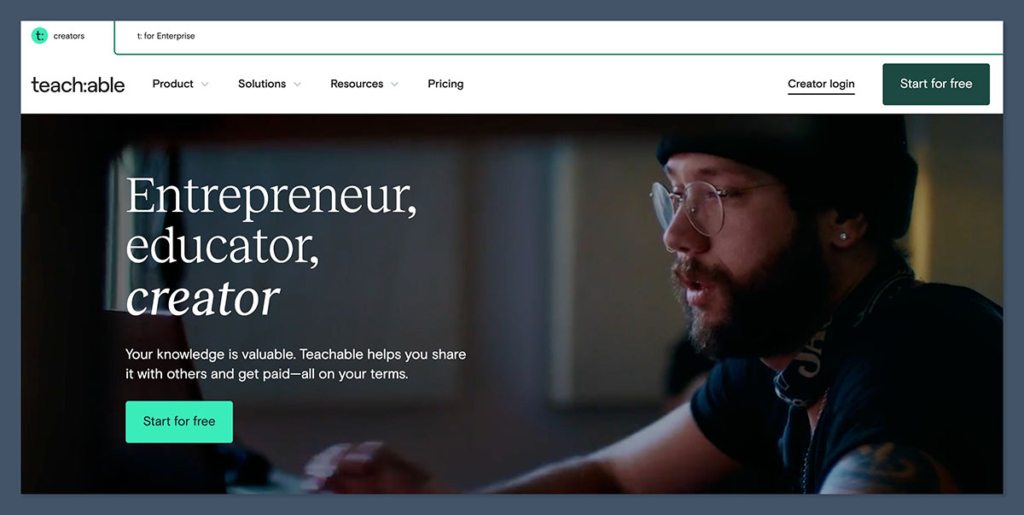
Teachable is purpose-built for online education.
You get a course builder, quizzes, video hosting, and a student dashboard — all without needing external tools.
They also allow product bundles, affiliate programs, and private communities.
It’s great for turning your knowledge into a product you can sell at scale.
Pros:
- Easy-to-use course builder
- Supports quizzes, drip content, and certificates
- Handles tax and payments globally
Cons:
- Branding is limited on lower plans
- High fees on free plan
Best for: Online educators and workshop creators
Pricing:
- Free plan: $1 + 10% per transaction
- Basic: $39/month
- Pro: $119/month
3. Gumroad
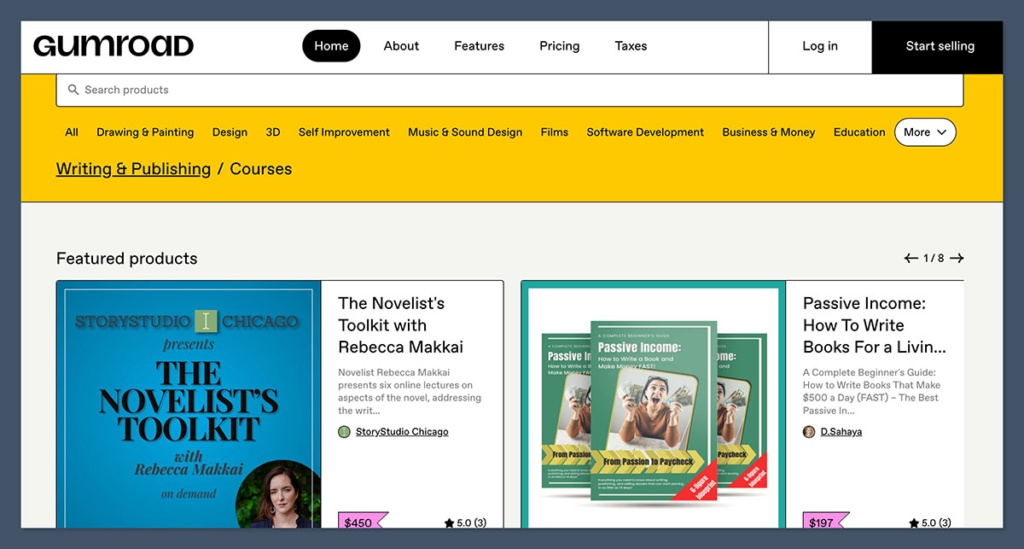
This platform is ideal if you’re just starting and want something fast.
Gumroad is super beginner-friendly and lets you list products, accept payments, and start making sales with zero upfront cost.
It’s built for creators — especially writers, artists, indie devs, and freelancers.
You can collect emails, offer pay-what-you-want pricing, and handle multiple file types. Great for side hustlers or solo creators.
Pros:
- Free to start
- Instant product pages with no setup
- Collect buyer emails and send updates
- Built-in analytics
Cons:
- 10% fee on every sale (plus Stripe/PayPal fees)
- No deep customisation or full storefront
Best for: Indie creators, freelancers, and first-time sellers
Pricing:
- Free to use
- 10% fee per transaction
- No monthly plan needed
4. Sellfy
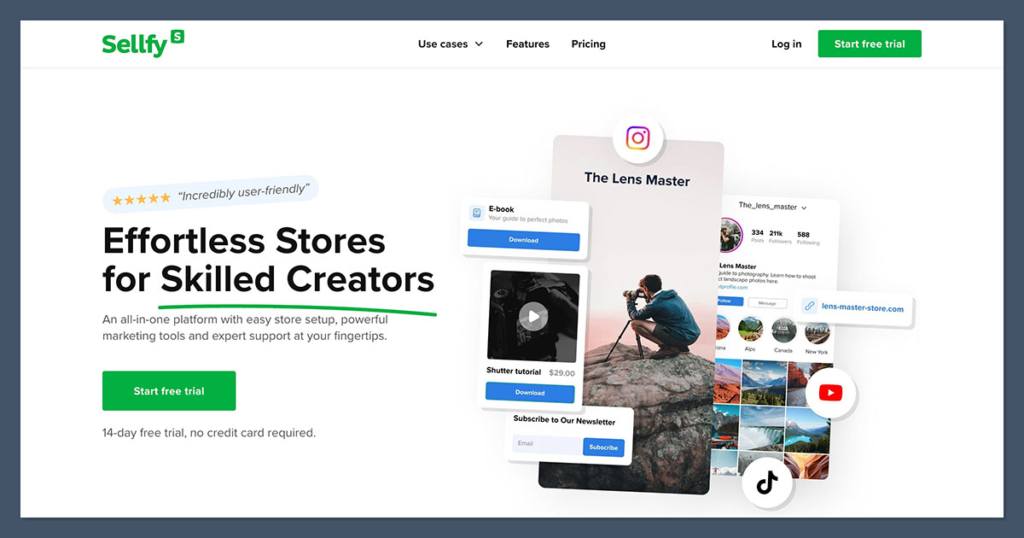
Sellfy is an underrated gem for creators who want to sell digital products, subscriptions, or print-on-demand — without needing a separate website.
The interface is clean, and the storefronts are mobile-friendly.
You also get built-in email marketing, product embedding, and upsells. I’ve seen it work great for selling printables, fonts, and even video content.
Pros:
- All-in-one storefront solution
- Offers POD + digital + physical products
- Built-in marketing tools and analytics
- Supports subscriptions and pay-what-you-want
Cons:
- Design customisation is limited
- Limited app integrations
Best for: Creators who want to get up and running fast with all tools in one place
Pricing:
- Starter: $29/month
- Business: $79/month
- No extra fees on sales
5. Podia

Podia is a clean, powerful platform designed for course creators, coaches, and digital product sellers.
What I like is how everything’s in one place — your website, email list, community, checkout, and content delivery.
If you’re teaching something or want to build a recurring income from memberships, Podia is hard to beat.
Pros:
- No transaction fees
- Sell courses, downloads, webinars, and memberships
- Email marketing and product bundles included
- Offers free migration from other platforms
Cons:
- Not ideal for physical products
- Checkout design is simple and not as flexible
Best for: Coaches, educators, and course creators
Pricing:
- Mover: $39/month
- Shaker: $89/month
- No transaction fees on paid plans
6. Payhip

Payhip is a great entry-level tool if you’re on a tight budget but still want a professional storefront.
You can sell ebooks, software, courses, memberships, and coaching — all with EU VAT handled automatically.
The affiliate marketing feature is built in, and they even allow pay-what-you-want pricing and license keys.
Pros:
- Free to start
- EU VAT automatically handled
- Supports multiple product types
- Simple affiliate setup
Cons:
- 5% fee on the free plan
- Storefront design is basic
Best for: Hobby sellers, freelancers, low-volume sellers
Pricing:
- Free plan: 5% per transaction
- Plus plan: $29/month (no fees)
- Pro plan: $99/month (more features)
7. Etsy (for digital downloads)

If your digital product has a handcrafted or design-focused vibe — think planners, templates, illustrations, fonts — Etsy is still a strong option.
The search traffic is there, and Etsy shoppers are used to paying for creative assets.
You’ll compete on price and visuals, but if you understand Etsy SEO, you can still win.
Pros:
- Huge marketplace with built-in traffic
- SEO tools + tagging
- Trust factor with shoppers
Cons:
- 6.5% fee + listing and payment fees
- Limited store branding
- Competitive and saturated
Best for: Designers and artists selling creative digital assets
Pricing:
- $0.20 per listing
- 6.5% transaction fee
- 3% + 25¢ payment processing
8. Kajabi

Kajabi is more than just a platform — it’s an entire ecosystem for high-ticket digital product businesses.
If you’re selling premium courses, coaching, or memberships, this is the best all-in-one solution.
You get full control over funnels, emails, CRM, webinars, and automation — without needing a developer.
Pros:
- High-end design and branding
- Advanced email and automation flows
- Strong analytics and lead tracking
Cons:
- Expensive entry point
- Might be overkill for beginners
Best for: Serious creators and digital businesses scaling past £5k/month
Pricing:
- Basic: $149/month
- Growth: $199/month
- Pro: $399/month
9. ThriveCart (with Learn+)
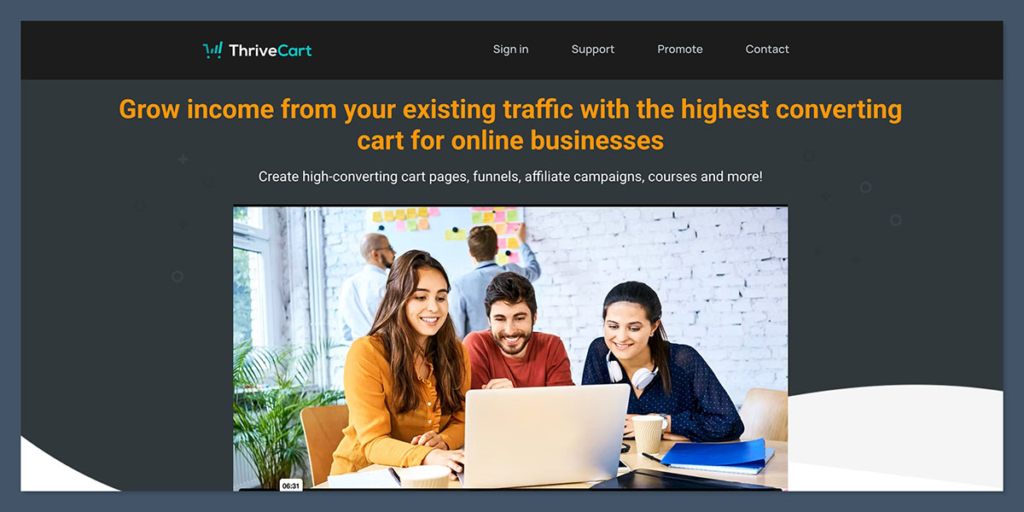
ThriveCart is a one-time payment tool that gives you high-converting checkout pages, upsells, order bumps, and now even a course platform with Learn+.
Great for marketers and info product sellers who want full ownership and don’t want monthly subscriptions.
Pros:
- Lifetime license, no ongoing cost
- Powerful checkout flows
- Learn+ is solid for digital course delivery
Cons:
- No built-in storefront
- Limited storefront customisation
Best for: Marketers, funnel builders, and high-volume product sellers
Pricing:
- $495 one-time
- Learn+ add-on: +$195 (one-time)
10. WooCommerce (with extensions)

If you’re on WordPress, WooCommerce gives you total freedom.
Combine it with extensions like WooCommerce Downloads, Memberships, or Subscriptions, and you can build anything.
You’ll need to manage plugins, hosting, and updates — but you get unlimited flexibility.
Pros:
- Total control over everything
- Large library of add-ons and themes
- Great for SEO
Cons:
- Needs ongoing maintenance
- Can get complex
Best for: Developers, bloggers, and businesses that want full ownership
Pricing:
- Core plugin: Free
- Hosting: from $10–$30/month
- Extensions: $50–$200/year each
11. SendOwl
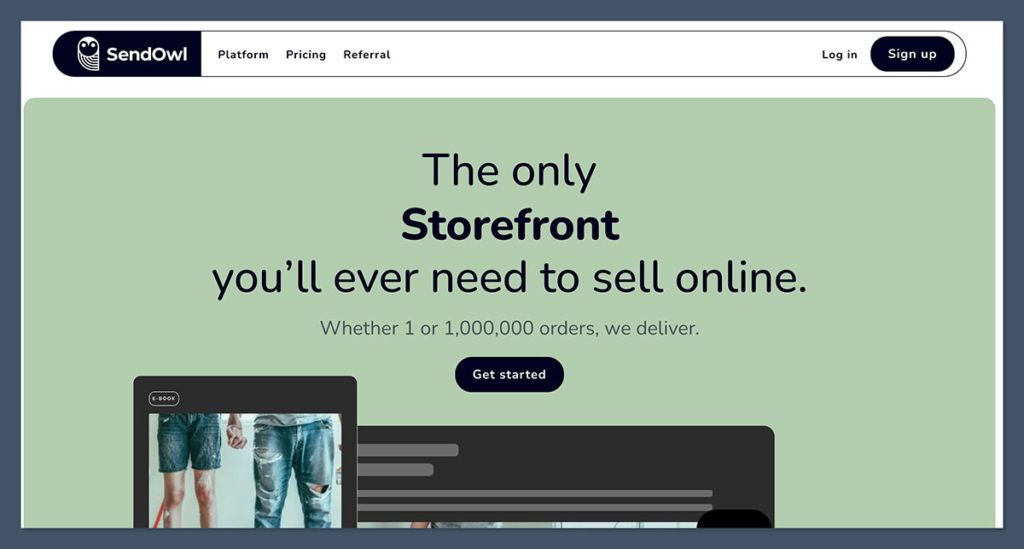
SendOwl focuses purely on selling and delivering digital products.
It’s a great add-on for an existing site, blog, or landing page.
It supports bundles, subscriptions, pay-what-you-want, and even affiliate programs. Clean interface, no bloat.
Pros:
- Works with your own site or blog
- Handles subscriptions and bundles
- Simple UI
Cons:
- Not an all-in-one platform
- Lacks storefront design tools
Best for: Sellers who already have traffic and just need a backend system
Pricing:
- Basic: $9/month
- Standard: $15/month
- Premium: $39/month
12. Notion (via marketplaces)

Selling Notion templates has exploded.
There are now entire marketplaces — like Notionery, Notion Market, or even Gumroad collections — dedicated to it.
You don’t need a store. You just need a quality template and a payment link.
Pros:
- No coding or tech setup
- Huge demand for productivity templates
- List on multiple marketplaces
Cons:
- No storefront (unless using Super or Potion)
- Revenue share varies by platform
Best for: Productivity creators and template sellers
Pricing:
- Free to list
- Platforms take 10%–30% commission
13. Lemon Squeezy
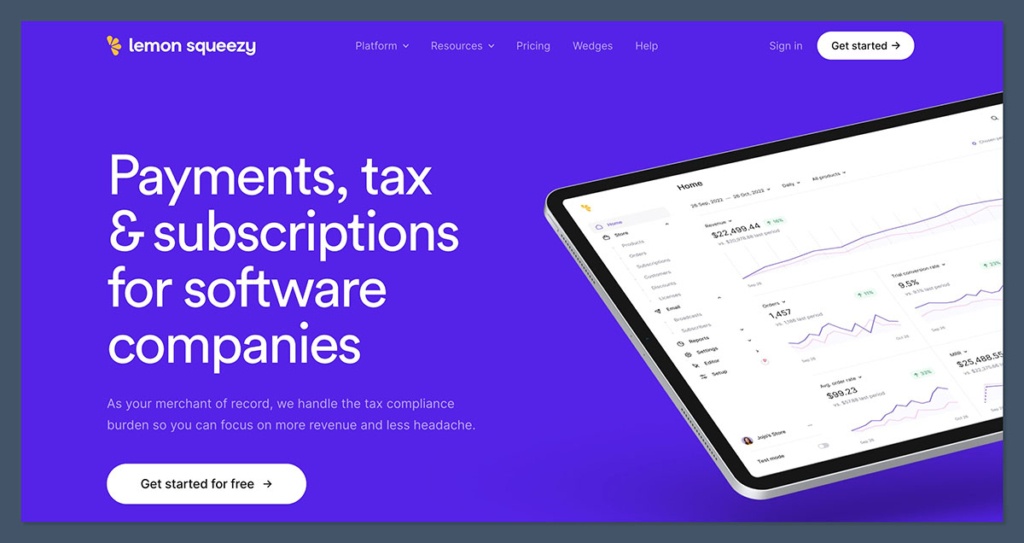
Designed with SaaS founders and developers in mind, Lemon Squeezy makes it easy to sell licenses, subscriptions, and digital tools.
It handles taxes globally and has a slick UI.
It’s newer, but growing fast. Great for niche technical products and indie hackers.
Pros:
- Handles EU VAT, tax reports, and invoices
- Clean dashboard and analytics
- Supports subscriptions and licensing
Cons:
- Still building integrations
- Limited for design-heavy storefronts
Best for: SaaS tools, devs, indie software creators
Pricing:
- Free plan
- 5% transaction fee
14. Creative Market
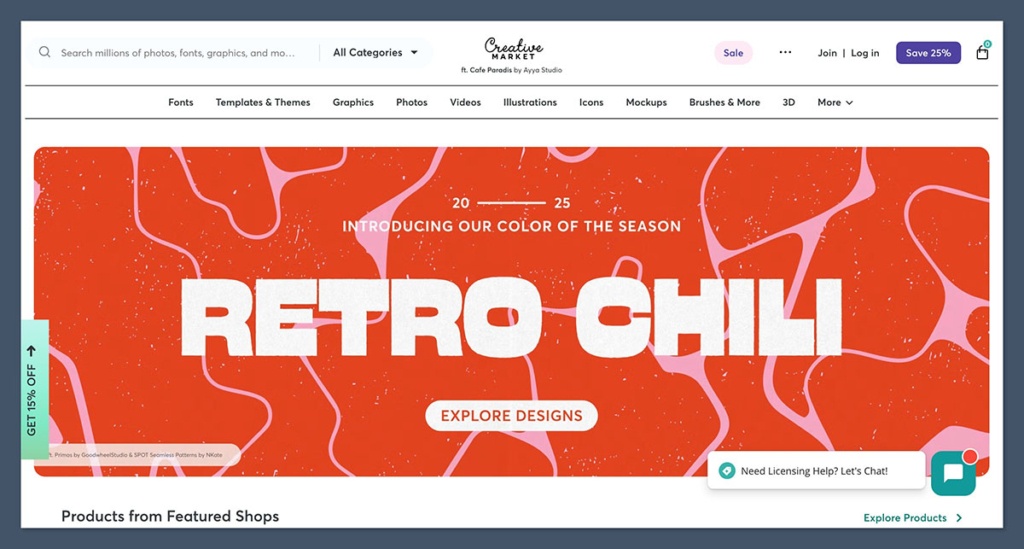
This platform is perfect if you’re a graphic designer, font creator, or selling templates.
The audience is full of other creators looking for polished design assets.
No upfront cost — but it’s a competitive marketplace and you’ll need to apply to sell.
Pros:
- High-intent buyer traffic
- No monthly fees
- You keep up to 70% of sales
Cons:
- Must apply and be accepted
- No full storefront customisation
Best for: Designers selling visual products
Pricing:
- Free to join
- Revenue split: 30%–70% in your favour
15. PayLoadz
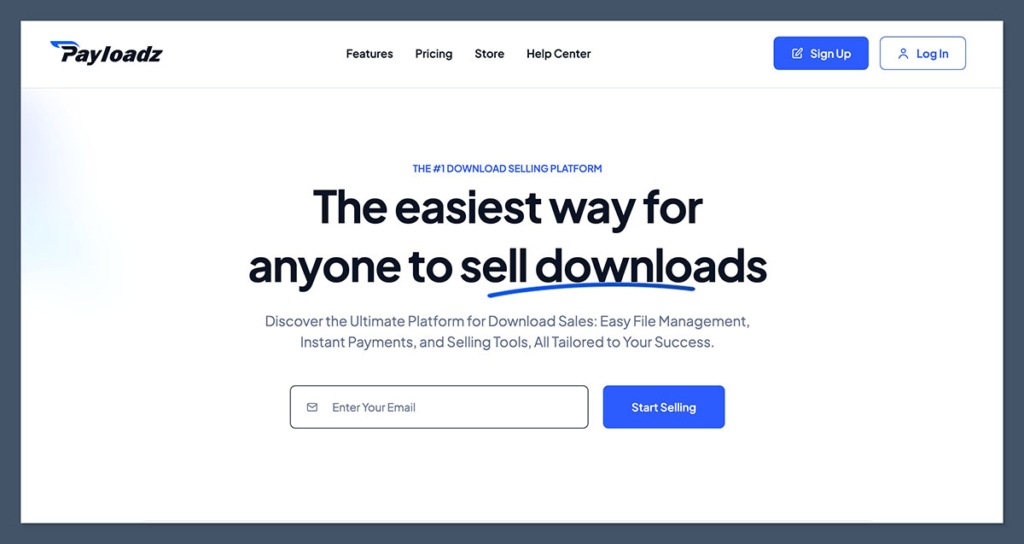
One of the oldest platforms around — and still useful if you want a no-fuss way to sell files, music, or PDFs. It’s not flashy, but it works.
You upload your file, set your price, and it handles delivery and payment processing.
Pros:
- Simple file delivery
- Works with PayPal
- Supports affiliate setup
Cons:
- Outdated interface
- Limited design or store control
Best for: Ebook sellers, musicians, small digital product creators
Pricing:
- Starts at $14.95/month
- No transaction fee beyond PayPal/Stripe
Final Thoughts
There’s no “perfect” platform. But there’s definitely a best-fit platform for where you are right now.
If you want control: Shopify, WooCommerce, or Podia.
If you want speed: Gumroad, Payhip, or Lemon Squeezy.
If you’re selling design assets: Etsy, Creative Market, or Notion marketplaces.
If you’re building a full info product business: Kajabi, ThriveCart, or Teachable.
My advice?
Start simple. Launch fast. Then scale into the platform that matches your growth.
Don’t let “perfect” stop you from shipping the product.






